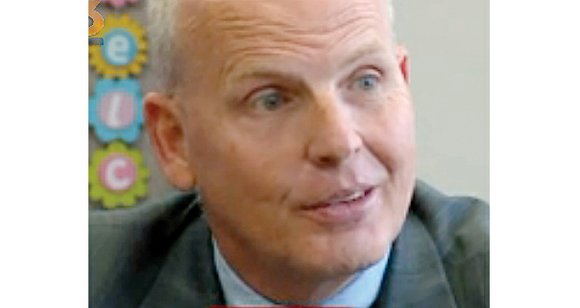No $ to fix schools
Jeremy M. Lazarus | 6/3/2016, 11:22 a.m.
“I don’t know whether we’ll be able to keep the buildings open.”
The same rundown buildings that many Richmond students attend are likely to be the same buildings where a new crop of students will be attending class 10 years from now.
Unless Richmond eliminates other planned projects to focus on schools, finds a new source of revenue or raises taxes significantly, the City of Richmond would not be able to afford to renovate or replace those buildings.
That’s the grim conclusion of a new study from David Rose of Davenport & Co., the city’s financial adviser.
That’s also a nightmare scenario to Tommy Kranz, Richmond Public Schools’ assistant superintendent for operations.
“I don’t know whether we’ll be able to keep the buildings open,” Mr. Kranz said, worried about failing air conditioning and heating systems, leaking roofs and a host of other problems he might not be able to afford to deal with.
Richmond City Council shifted an additional $19 million to schools this year, but virtually all of it had to be spent to lease or buy trailers for added classroom space at overcrowded schools on South Side, he said.
Little was left to make improvements to other school buildings.
During the five-year period between 2017 and 2021, the city plans to borrow $318 million to spend on approved projects for parks, streets, roads, city buildings and a host of other needs.
However, just $14 million would be devoted to general school maintenance during that period. That’s slightly less than $3 million year to deal with the multitude of problems that afflict the school system’s 40 aging buildings. Mayor Dwight C. Jones averaged $3 million a year for school maintenance during his eight-year tenure, separate and apart from the $19 million spent to ensure schools meet Americans with Disabilities Act requirements and the $196 million spent on four new schools.
The $14 million is definitely far less than $94 million the Richmond School Board requested for the five-year period, which also was well short of the $169.8 million the board’s own reports show actually would be needed.
Mayor Jones commissioned the Davenport study in hopes of creating a multi-year plan to fund school needs before he leaves office. The study is now in the hands of City Council.
According to the study, the $318 approved for all city projects, and likely to be borrowed, essentially will max out the city’s credit card through 2021 under its current borrowing policy, which limits total debt to 10 percent of the combined operating and school budgets.
Taking on that debt alone would require the city to shift $18 million a year to debt service by 2022 to cover the cost of repaying principle and interest.
The city could loosen its conservative policy to take on more debt — potentially an additional $200 million, the study noted.
The problem is the cost. According to the study, Richmond’s revenue is projected to grow slowly in the next few years, rising about $10 million to $12 million a year or about 1.4 percent.
Borrowing an extra $200 million would cost the city $15 million to $20 million a year in additional debt service costs. In other words, virtually all of the new revenue would have to go to repaying the debt, leaving no money for pay raises for city workers or other essential needs.
City Council has the option of scrapping some of the projects it has approved and shifting funds to school maintenance and renovation. However, that hasn’t happened, despite the strong support council members have voiced for the public schools.
Council members also have put a higher priority on a number of projects, including one of the largest — replacing the city’s emergency communications system at $48 million.
Council also has as priority developing a slavery memorial in Shockoe Bottom, a project that is to start in the next year and on which the city plans to spent $8 million to $19 million to create a museum around the Lumpkin’s Jail site; a community center on North Side and a teen center in Church Hill.
The list of priority projects also includes upgrades in city parks, renovations to public libraries, improvements to the riverfront and creation of a statue to honor the historic Fulton community that was wiped out through urban renewal.
Given the expense that extra debt will cost and the backlash the council could face for backing tax increases, the problem has become a hard nut to crack.
Schools are not the only places clamoring for investment. John Buturla, the city’s deputy chief administrative officer for operations, has a long list of bridges, streets, public buildings and other city property that has been neglected.
Mr. Buturla has reported that the city would need to borrow up to $1.2 billion during the next 10 years to address the array of unmet needs.








